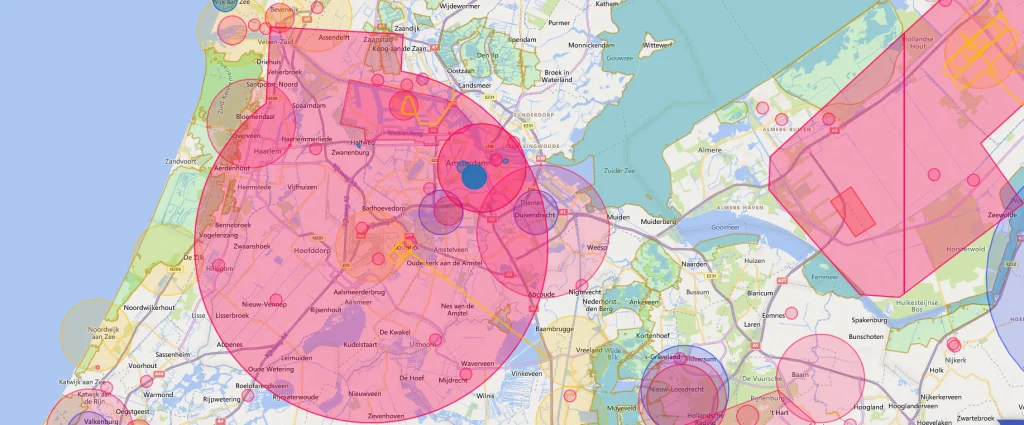Drone recordings are a great addition to a corporate film, aftermovie or instructional video. You can also take stunning photos from the air. That of course saves on the costs of a helicopter flight. 🙂
But making drone recordings is not allowed just like that. This involves quite a few rules and conditions. In this blog we would like to take you on a look behind the scenes. What should you take into account when making drone recordings?
Schedule
The planning is 'key'. It is useful to know in advance what and where you are going to fly. For example, you have to take airports into account. You are often not allowed to fly within a radius of 5 km. These locations are indicated as a no-fly zone. You are not allowed to fly here.

Weather conditions
The weather conditions are of course also important to check in advance. You want the recordings to look like you have in mind. In addition, it is not convenient and even prohibited if you fly in a wind storm. A calm weather (cloudy / sunny / little wind) is ideal for making drone recordings. You can and should also fly in the snow. No flying in the rain.
Permit(s) and exemption(s)
Sometimes you may be allowed to fly to a location, but only if you apply for an exemption. You then need to make a flight plan, and sometimes also contact the control tower of an airport nearby. Afterwards it is possible to fly to location.
In addition, as a pilot you must have a pilot's license if you are going to fly a drone heavier than 250 grams and/or a drone with a camera. You then need an A1/A3 certificate. You may fly recreationally, but with certain rules. Maximum 120 meters high, not above buildings and not near crowds.
If you want to fly commercially, you will need to obtain an additional pilot's license. Both in theory and practice. The maximum height of 120 meters rule remains in place, the other rules are abolished. In addition, the drone must also be registered with the RDW. You are then an operator of the drone. This could be a company or person.
Drones and lenses
Have you selected the location? Everything complete? Then it's time to fly. Depending on where you are going to fly and what you are going to film, it is useful to choose the right drone and lens. Drones come in all kinds of sizes and capabilities. So choose the drone that is suitable for the type of recording you want to make.
The flying day
Everything is ready. The flight can begin. On the day itself it is useful to double check the weather forecast. Everything fine? Then the flight can begin!
After the drone shots
Once the recordings have been completed, editing can then take place. We always make drone recordings in a RAW format. This means that after the time spent editing, we can still do a lot with the colors, effects and sizes of the photos and videos. This way you always have the best results.
As you can see, there is quite a bit involved in making drone recordings. But it's a great thing to do, and if you like gadgets then it's definitely something for you to do.
Do you want to have drone recordings made? Then we would like to spar with you! Our pilots are trained for this and have all the necessary certificates to fly in Europe. In addition, they have a wealth of experience. Because flying with a drone is one thing, but also taking daring images is another.
